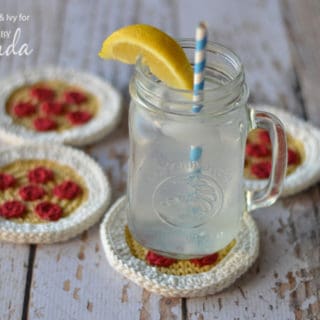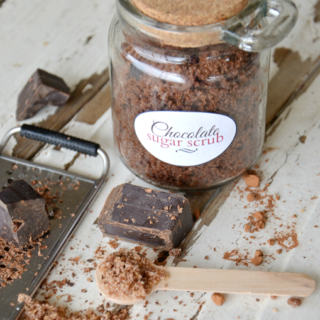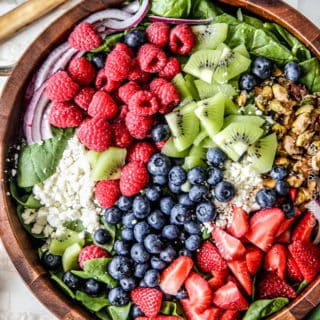Food canning is a practical and efficient method for preserving a variety of foods, ensuring you have access to produce throughout the year. As a beginner, you may wonder about the process and the benefits of canning. This article will provide an overview of canning techniques, equipment, and safety precautions to help you get started.
By learning how to properly can your own fruits, vegetables, and other items, you’ll be able to store your home-grown or purchased produce for longer periods of time. As a result, you can enjoy your favorite flavors even when they’re out of season or unavailable in stores. Additionally, canning allows you to have control over the ingredients in your preserved foods, contributing to a healthier and more sustainable lifestyle.
Throughout this article, you’ll discover various canning methods, including water bath canning and pressure canning, as well as the equipment you need, such as jars, lids, and canners. Furthermore, you’ll learn how to safely sterilize your materials and handle your preserved foods. So, let’s dive into the world of canning and explore the numerous possibilities it offers.
VIEW IN GALLERY
Canning Methods
In this section, we will explore different canning methods and their benefits, drawbacks, and when to choose each method. We will dive into Pressure Canning vs. Water Bath Canning, Advantages and Disadvantages of Each Method, and Criteria for Choosing the Appropriate Method.
Pressure Canning vs. Water Bath Canning
When canning food, you have two primary techniques at your disposal: pressure canning and water bath canning. Pressure canning uses a specialized pressure cooker to create a high-temperature environment, ideal for eliminating bacteria and sealing your jars. On the other hand, water bath canning involves submerging jars in boiling water for a specific amount of time.
Advantages and Disadvantages of Each Method
- Pressure Canning
- Advantages:
- Higher temperature ensures the elimination of harmful bacteria.
- Appropriate for low-acid foods.
- Faster processing times compared to water bath canning.
- Disadvantages:
- Requires specialized equipment.
- Higher initial investment.
- Advantages:
- Water Bath Canning
- Advantages:
- Ideal for high-acid foods.
- Lower initial investment.
- Simpler process for beginners.
- Disadvantages:
- Not suitable for low-acid foods.
- Longer processing times compared to pressure canning.
- Advantages:
Criteria for Choosing the Appropriate Method
To select the right canning method for your needs, consider the following criteria:
- Food acidity: Pressure canning is necessary for low-acid foods, while water bath canning works well for high-acid foods.
- Equipment: If you have access to a pressure canner, you can opt for pressure canning. However, if you’re just starting with canning, a water bath canner may be a more accessible choice.
- Processing time: Consider the time it takes to process your canning. Pressure canning is generally quicker, while water bath canning requires more extended processing times.
Canning Equipment and Supplies
In this section, we’ll explore the essential equipment and supplies you’ll need for successful canning. We’ll cover canning jars, lids, and bands, pressure and water bath canners, as well as other useful tools and accessories. We’ll also discuss quality standards and certifications to ensure you’re using reliable and safe products.
Canning Jars, Lids, and Bands
Choosing the right containers is crucial for preserving your food. You’ll need:
- Glass jars: Select jars specifically designed for canning, as they can withstand high temperatures and repeated use. Common sizes include half-pint, pint, and quart jars.
- Lids: Use one-time use, metal canning lids with sealing compound to create an airtight seal.
- Bands: Screw-on metal bands hold the lid in place during processing. Reusable, but they should be replaced if they become rusted or damaged.
Pressure Canners and Water Bath Canners
There are two main types of canners that you will need to consider:
- Pressure Canners: Recommended for low-acid foods (like vegetables and meat), pressure canners heat contents to a higher temperature (240°F), killing any harmful bacteria. They come with a lid that seals to create a pressurized environment.
- Water Bath Canners: Suitable for high-acid foods (like fruits and pickles), water bath canners are large pots with a rack that hold jars submerged in boiling water (212°F) for a specific amount of time.
Other Canning Tools and Accessories
Additional tools and accessories will make your canning process more efficient and safe:
| Tool | Description |
|---|---|
| Funnel | Used to fill jars without spilling, ensuring a clean sealing surface. |
| Jar Lifter | Helps to safely remove hot jars from the canner. |
| Lid Wand | Has a magnet on the end to lift lids out of hot water, minimizing contact. |
| Bubble Remover | Used to release trapped air bubbles in jars prior to sealing. |
Quality Standards and Certifications
Ensure your canning equipment meets quality standards and certifications to guarantee safe and effective food preservation. Look for:
- National Center for Home Food Preservation (NCHFP): Approved methods and equipment from the NCHFP ensure adherence to the latest research and safety guidelines.
- USDA: Following USDA guidelines for canning will further ensure the safety of your preserved foods.
- Product Ratings: Choose products with good reviews and high ratings from reputable manufacturers, as they are more likely to meet safety and performance standards.
Canning Foods
Canning is an excellent way to preserve food in a safe, long-lasting, and convenient way. By following the right steps, you can enjoy homemade canned goods and maintain the quality of your food for an extended period.
Preparing and Selecting the Right Foods for Canning
Choose fresh, high-quality produce to ensure the best results. Make sure your fruits and vegetables are ripened appropriately and free from damage or decay. Thoroughly wash and trim your produce before proceeding to the next step.
Pre-Canning Treatments
Some produce may require specific treatments, such as blanching or peeling, to ensure safe canning. These treatments may vary depending on the type of food, so always consult a trusted canning guide to determine the correct methods for your chosen ingredients.
Filling and Sealing the Jars
Start by filling clean, sterilized jars with your prepared produce. Use a canning funnel and a jar lifter for ease and safety. Leave appropriate headspace according to the recipe, wipe the jar rims with a clean cloth, and secure lids and bands firmly. Do not overtighten the bands.
Processing the Jars
Follow your recipe’s guidelines for processing jars in either a boiling water bath or a pressure canner. Ensure that you process the jars for the recommended time and adjust for your altitude if necessary.
Cooling and Storing the Jars
Once the processing time has finished, use a jar lifter to carefully remove the jars from the canner. Allow them to cool undisturbed for 12-24 hours. Check for proper seals, then label, date, and store your jars in a cool, dark location.
Troubleshooting Common Canning Problems
Occasionally, you may encounter issues such as broken jars, unsealed lids, or discolored food. Consult a trusted canning guide to determine the cause and solution for these problems, and always discard any spoiled or contaminated canned goods.
Canning Safety
When it comes to canning, safety is of utmost importance. Understanding the risks and using proper canning techniques can help ensure the quality and safety of your canned foods.
Microbial and Chemical Risks in Canned Foods
Microorganisms, such as bacteria and mold, can spoil canned foods and pose health risks. Chemical contamination may also occur due to leaching of harmful substances from canning materials. To ensure your canned foods are safe:
- Use fresh, high-quality ingredients.
- Make sure your canning equipment is clean and well-maintained.
- Avoid using damaged or corroded cans, lids or jars.
Preventing Foodborne Illnesses Through Canning
By using proper canning techniques, you can reduce the risk of foodborne illness. Keep in mind:
- Using the correct processing method helps prevent harmful bacteria growth. Choose between pressure canning or water bath canning based on the food you’re preserving.
- Follow tested recipes to ensure the proper acidity level and processing time are used.
Safe Canning Practices and Guidelines
Following specific guidelines will help you maintain the safety and quality of your canned foods:
- Always process canned foods for the recommended time and temperature.
- Inspect canned goods for signs of spoilage, such as bulging lids, leakage, or an off odor, before consuming.
- Store your canned items in a cool, dry place and use them within one year for best quality.
Common Canning Myths and Misconceptions
There are many canning myths and misconceptions that can lead to spoiled or unsafe canned goods. Some common ones include:
- Myth 1: You can safely use any jar and lid for canning – This is incorrect, as you should only use canning-specific jars and lids to ensure a proper seal.
- Myth 2: It’s okay to can foods without a recipe – This is not true, as using tested recipes helps ensure the proper acidity and processing time for safe canning.
Arming yourself with accurate canning knowledge and following safe practices will help you create delicious and safe canned goods for your pantry.
Canning for Long-Term Food Storage
In this section, you will learn about canning as a method for long-term food storage. It covers the benefits and limitations of canned foods, shelf life and storage conditions, best practices for canning, and how to incorporate canned foods into your long-term food storage plan.
Benefits and Limitations of Canned Foods for Long-Term Storage
Canned foods can be a valuable addition to your long-term food storage because they are:
- Non-perishable and have a long shelf life
- Convenient and easy to store
- A good source of nutrients
- Available in a wide range of food items, including fruits, vegetables, meats, and beans
However, there are a few limitations to consider:
- Canned foods can be heavy, which may limit the number of cans you can store and transport
- Most canned foods require cooking, which might not always be possible during an emergency
- Metal cans can corrode, especially if exposed to moisture
Shelf Life and Storage Conditions of Canned Foods
Shelf life of canned foods varies depending on the food item and the quality of the canning process. In general, cans can last for several years if stored in optimal conditions:
- A cool, dark, and dry environment (between 50°F and 70°F)
- Avoiding exposure to temperature fluctuations and direct sunlight
- Regularly rotating your canned food stock to keep the oldest cans at the front and use them first
Always check for signs of spoilage or damage before consuming canned foods. Bulging, leaking, or rusting cans can indicate spoilage and should be discarded.
Best Practices for Canning for Long-Term Storage
To ensure the safety and longevity of your canned foods, follow these best practices:
- Choose high-quality produce and meat that are fresh and free from bruises, blemishes, or spoilage
- Follow up-to-date canning guidelines and tested recipes from reputable sources
- Use the appropriate canning method (pressure canning or water bath canning) based on the acidity of the food
- Inspect jars and lids for cracks, chips, or dents before and after canning
Incorporating Canned Foods into a Long-Term Food Storage Plan
When planning your long-term food storage, consider these tips for incorporating canned foods:
- Calculate the number and variety of canned foods you will need for your household by considering the caloric and nutritional needs of each person
- Include a mix of different types of canned foods, such as fruits, vegetables, proteins, and staple foods like beans or pasta
- Keep an inventory of your canned food supply, including the dates of purchase and expiration, to help you track and manage your stock
Remember that canned foods are only one component of a well-rounded long-term food storage plan. Always diversify your food sources and incorporate other shelf-stable products, such as dry goods, freeze-dried foods, and dehydrated items, to ensure variety and nutritional balance.
Canning for Emergency Preparedness
As a reliable and practical food preservation method, canning plays a significant role in emergency preparedness. This section will cover the role of canned foods in emergency situations, the best canned foods for emergencies, storage and rotation practices, and supplementing canned foods with other emergency food sources.
Role of Canned Foods in Emergency Preparedness
Canned foods offer several advantages in emergencies, including their long shelf life, ease of storage, and minimal preparation requirements. In uncertain situations, having a stockpile of canned goods can provide you and your family with a sense of security and a readily available source of nutrition.
Best Canned Foods for Emergencies
When choosing canned foods for your emergency stockpile, prioritize items with a high nutritional value, long shelf life, and minimal preparation requirements. Some examples of ideal canned foods for emergencies include:
- Canned fruits and vegetables
- Canned meats and fish
- Canned beans and legumes
- Canned soups and stews
- Canned dairy products
Storage and Rotation of Canned Foods for Emergencies
To ensure the quality and safety of your canned goods during an emergency, follow proper storage and rotation practices. Store canned foods in a cool, dark, and dry location, away from temperature fluctuations and moisture. Additionally, regularly rotate your stockpile by consuming older items and replacing them with newer ones. This practice will not only maintain the freshness of your supplies but also familiarize you with the taste and preparation of the stored foods.
Supplementing Canned Foods with Other Emergency Food Sources
While canned foods are an essential part of an emergency food supply, it is wise to also include other non-perishable food options in your stockpile. These additional sources can provide variety and additional nutrients, maximizing your preparedness in times of crisis. Some examples of supplementary emergency food sources are:
- Dried fruits and vegetables
- Whole grains and pasta
- Shelf-stable milk and dairy alternatives
- Jerky and dehydrated meats
- Energy bars and trail mix
Canning for Sustainability
In today’s world, sustainability is a key concern for many people, and canning is one method you can use to contribute to a greener lifestyle.
Environmental Benefits and Challenges of Canning
Canning offers several benefits to the environment. By preserving food, you’re reducing the need for transportation and storage, which lowers your carbon footprint. Additionally, canned goods have a longer shelf life, so they help reduce food waste.
However, there are challenges to consider as well. The canning process requires energy and resources such as water, and canning materials like glass jars and metal lids can be resource-intensive. To minimize these challenges, consider using reusable jars and lids and sourcing your supplies locally.
Reducing Food Waste Through Canning
Food waste is a significant issue that contributes to greenhouse gas emissions. Canning is an effective way for you to reduce your own food waste. By preserving your produce when it’s ripe and in season, you can prevent spoilage and extend the life of your food, reducing the need for purchasing more items later.
Canning Local and Seasonal Foods
By canning locally grown and seasonally available foods, you’re supporting local farmers and minimizing the environmental impact of transportation. This approach can also save you money, as seasonal produce is often less expensive. Make a point to visit your local farmer’s market or cooperative grocery store to find locally grown ingredients for your canning projects.
Incorporating Canned Foods into a Sustainable Lifestyle
Once you’ve canned your food, it’s essential to plan meals that utilize your preserved goods. This will help you to fully benefit from your sustainable practices. Some ways to incorporate canned foods into your lifestyle include:
- Substituting canned produce for fresh in recipes when it’s out of season
- Using canned vegetables and fruits in soups, stews, and sauces
- Enjoying canned fruits as a natural snack or dessert option
By following these guidelines, you can make canning a significant part of your sustainable lifestyle.
Conclusion
In this article, we covered the process and importance of canning as a food preservation method. Let’s recap the main points, explore future directions and innovations, and discuss the importance of safe and sustainable canning practices.
Summary of the Main Points
You have gained an understanding of the history of canning, its methodology, safety precautions, and the various types of canning techniques. You learned about how canning preserves food, extends its shelf life, and reduces waste.
Future Directions and Innovations in Canning
As technology advances, we can expect improvements in canning processes and equipment. Keep an eye out for innovations in:
- Eco-friendly canning materials to reduce environmental impact
- Automation to streamline home canning and improve safety
- Improved vacuum sealing techniques to enhance food quality and longevity
By staying informed and open to new advancements, you can optimize your canning experiences and embrace change.
Call to Action for Safe and Sustainable Canning Practices
Embracing safe and sustainable canning practices helps secure the wellbeing of both you and the environment. To make a positive impact, remember to:
- Follow proper canning recipes and guidelines
- Choose reusable, eco-friendly materials whenever possible
- Utilize seasonal and locally sourced produce to support farmers and minimize carbon footprint
By committing to these actions, you contribute toward a healthier, more sustainable world.



















